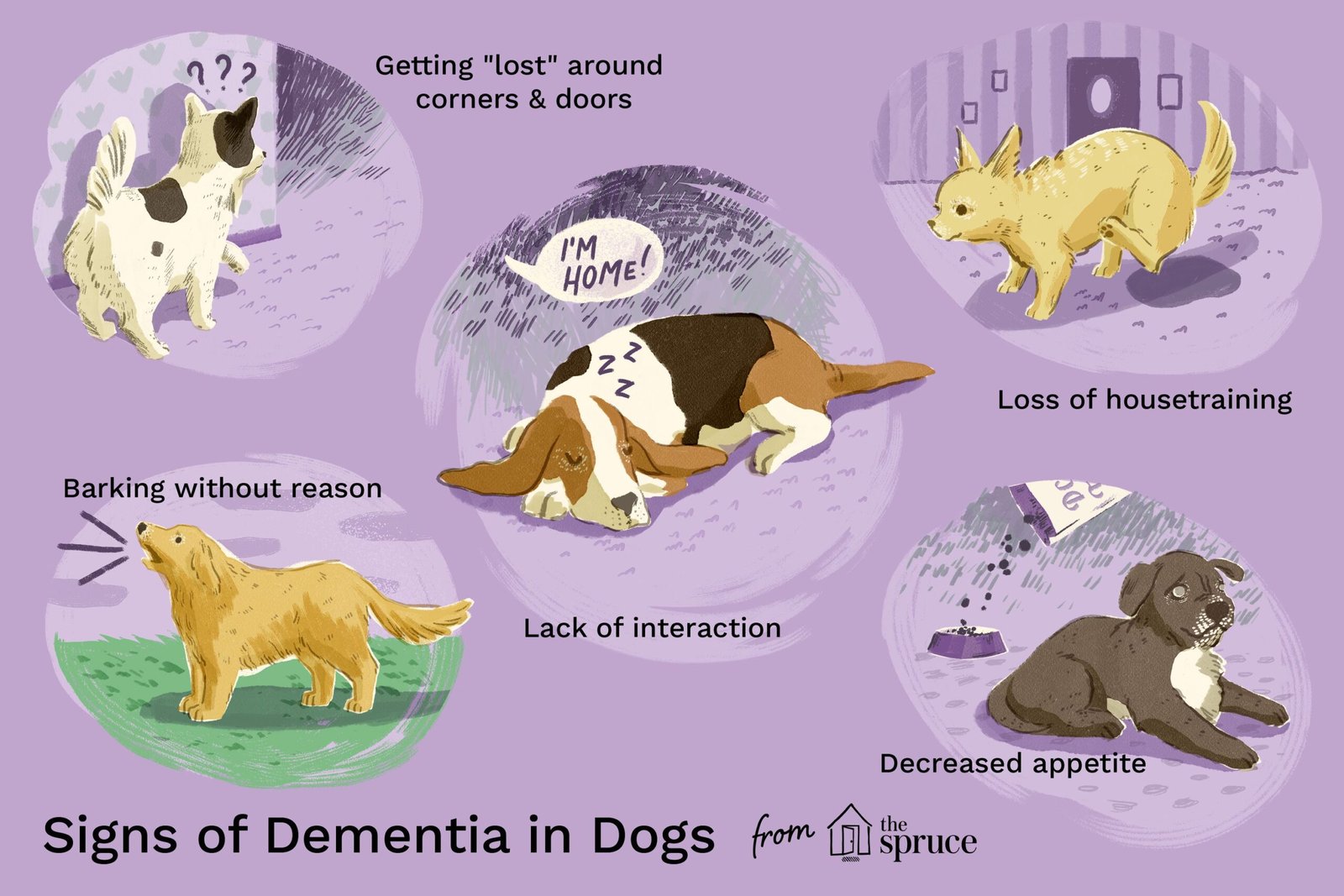🧠 Recognizing & Managing Cognitive Dysfunction in Senior Dogs
As dogs age—typically around 9–11 years—they can experience canine cognitive dysfunction syndrome (CDS), akin to Alzheimer’s in humans. Early recognition and intervention can significantly enhance your dog’s quality of life .
🧐 Common Signs to Watch For (Memory acronym: DISHA)
- Disorientation – Getting lost in familiar rooms, staring at walls, wandering aimlessly .
- Interaction changes – Becoming withdrawn or suddenly anxious around loved ones .
- Sleep–wake disturbances – Sleeping more during the day and restless or vocalizing at night .
- House soiling – Indoor accidents despite prior training .
- Activity level shifts – Pacing, repetitive behaviors, or decreased interest in play .
Additional signs include anxiety, appetite changes, impaired learning, and increased vocalization .
🩺 Diagnosis vs Normal Aging
A veterinarian will rule out other health problems—like vision loss, arthritis, infections, organ dysfunction—before diagnosing CDS .
🗺️ A Multimodal Management Plan
1. Medication
- Selegiline (Anipryl) boosts dopamine and acts as an antioxidant .
- Propentofylline enhances brain blood flow and mental alertness .
2. Specialized Diet
Prescription diets or those high in antioxidants, omega-3 fatty acids, L-carnitine, choline may support brain health .
3. Dietary Supplements
Supplements like SAMe, CoQ10, vitamins E & C, and other nutraceuticals can offer additional brain protection .
4. Environmental Enrichment & Routine
- Structured routine: feeding, walking, and bedtime at the same times every day .
- Mental stimulation: puzzle feeders, scent games, basic training, short interactive play sessions .
- Home adaptations: maintain familiar room layouts, use nightlights, add non-slip mats, and reduce clutter .
- Gentle physical exercise: short daily walks at the same time, with plenty of sniffing allowed .
💬 Support from the Community
Owners often share practical tips, such as installing nightlights, using orthopedic beds and ramps, and applying calming aids—like scents or supplements—to help manage nighttime anxiety .
“We leave nightlights on… little dog stairs… orthopaedic bed… adaptil spray… helped.”
🔚 Conclusion
CDS can’t be cured, but with early intervention, a well-rounded management plan can slow its progression and maintain quality of life. This includes medication, diet, mental engagement, routine, and home adjustments tailored to your senior dog’s needs.
📞 Always consult your veterinarian before starting medications or supplements. Regular vet check-ups—at least every six months—help catch changes early and allow timely adjustments .
Would you like me to create a printable checklist, sample daily schedule, or deep dive into any of these strategies?



